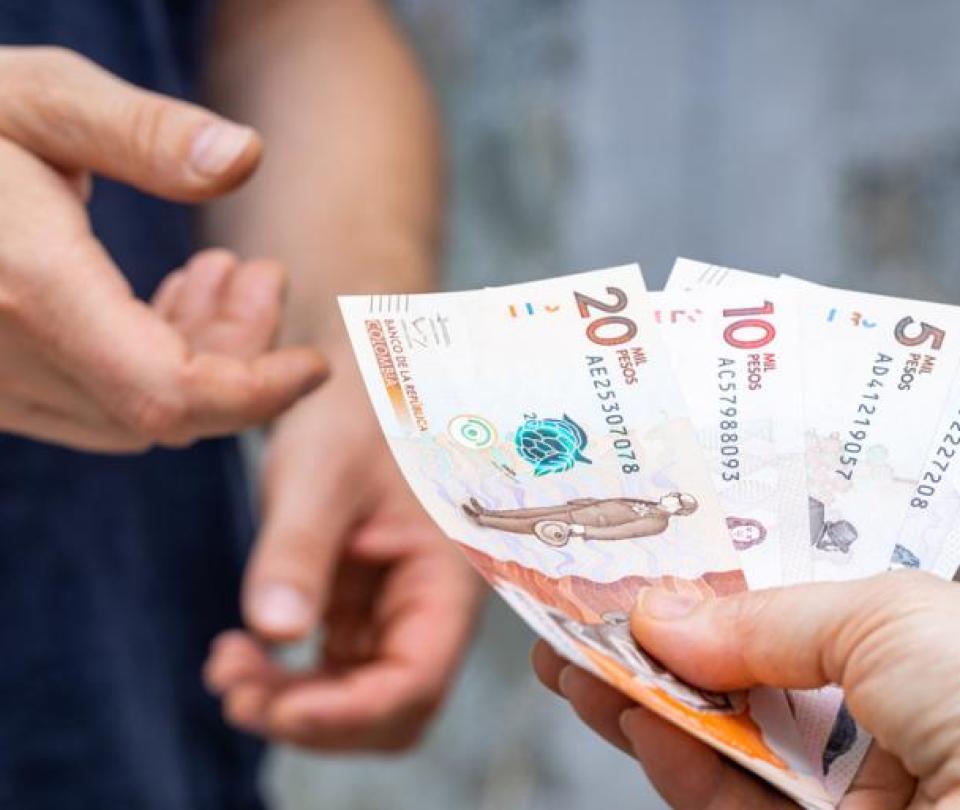This Saturday the Dane announced that inflation in Colombia continues unabated. In October, the annual variation of the consumer price index was 12.22%. A figure that had not been seen since 1999.
(Climate, dollar and high demand, the ‘perfect storm’ on agriculture).
The spending divisions that most marked this growth were food and non-alcoholic beverages, accommodation, public services and fuel. In such a way that the pocket of Colombians continues to be affected by the behavior of prices.
This scenario joins other factors that have disrupted the country’s economy, such as the loss of value of the Colombian peso and, as is well known, the economic tailspin of the conflict between Ukraine and Russia, which has the entire world on edge. Not surprisingly, the International Monetary Fund warned that the risk of a global recession is increasing.
Faced with the current scenario, many citizens wonder how to protect their assets and if it is possible to invest in these times.
(How many recessions has Colombia experienced in its recent history?).
“There is a lot of concern and it is normal… My recommendation is that you transform what is a crisis into an opportunity. Really, when there are difficulties, it is about changing the way we think, applying and learning new tendencies, new skills. It is an opportunity for change and there is no need to be afraid of recessions or crises”explains the economist Andrés Moreno Jaramillo.
The expert writer on investments in the New York stock market, Javier Hernández, agrees with this idea, for whom it is always a good time to invest: “What changes, depending on the context, is where it is more effective and strategic to put the money and how to take advantage of the current situation to take advantage”he told EL TIEMPO.
In this sense, it exemplifies that: if the world context indicates that oil is rising, people should develop investment plans in hydrocarbon companies that allow them to obtain profits from that situation. In a nutshell, the trick is knowing what to invest in and when.
Therefore, the key to investments is knowing how to take advantage of fluctuations in the price of assets to migrate capital at the right time to those that present an increase in value and, therefore, will generate a higher return.
For Andrés Moreno, the main thing in times of economic recession is to have a job and not stop looking for a fixed income. “When there is a crisis, it is normal for employment to be affected, therefore, you have to secure a job and not neglect your income.”
Along the same lines, the professional suggests having liquidity or a fund with sufficient resources to cover short-term needs such as public services and other receipts. “It is very important that we have an emergency fund that we can use at any time”he points out.
(The formula with which a country can face and get out of a recession).
Once the previous aspects have been solved, you can think about investing. At this point, according to Hernández, the three golden rules for are: spend less than you earn, set aside excess money for an investment, and educate yourself on investment techniques before you jump into the game. This way you avoid losing your capital in scams or in a bad move.
“It is not about rushing out to invest capital in any project without having a minimum of knowledge on the subject because people may end up facing greater losses or falling into the trap of illegal money collectors”, Hernandez warned.
Now, according to the expert, it is precisely in periods of high economic volatility and inflation that people should think about an investment plan not only because the income they receive from their usual activities is being devalued and inflation is hitting the ability consumption, but also because they will require new sources of income to ensure their financial stability.
In the current Colombian context, for example, Hernández recommends making investments in dollars, at least in the short term, to take advantage of the strength of the currency: buy that currency, invest in goods abroad and/or acquire shares on the stock market. New York are some options.
Of course, it is a decision that must be made according to the profile of the investor and the risk that he is willing to assume. In that sense, you cannot make mistakes such as getting into debt or selling everything to be able to buy dollars or invest in a single asset.
According to Moreno, before making the decision to invest, the person must know and analyze their risk profile because it is normal that, in times of crisis, the markets have downward volatility and capital is affected.
“Check if you are going to tolerate that volatility and can participate in the investments or if you better go for something much more conservative, that does not have as much volatility”, stands out. And he adds that the best thing will be to invest little by little, to the extent that, as already indicated, the appropriate scenarios are found to do so.
Finally, Hernández suggests not thinking only in dollars, because always “You always have to have something safe in the local currency. Depending on the economic solvency of the person, I would advise having between 10 to 25% of the investments in dollars”pointed out the writer of ‘Business in the Digital Age’.
JESSIKA BONILLA
Journalist ELTIEMPO.COM











